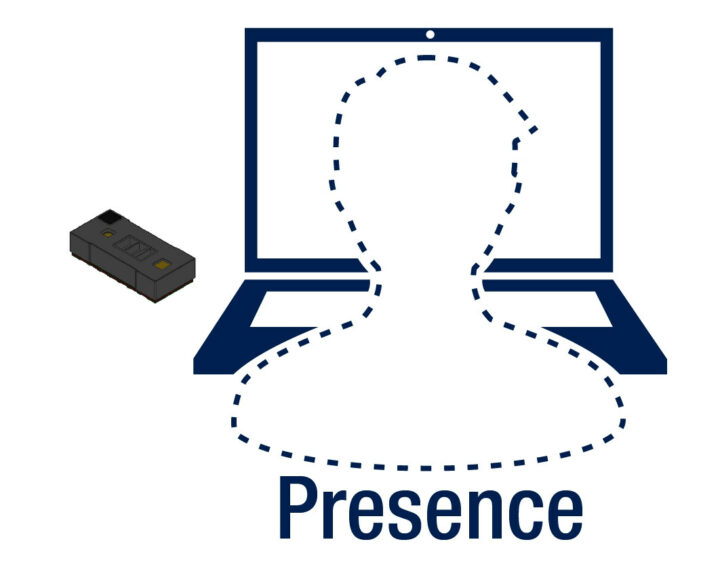STMicro introduced the VL53L8 multi-zone direct Time-of-Flight (dToF) sensor last month, but here’s another ToF sensor with VL53L5CP specifically designed for the PC market with the enablement of features such as user detection, gesture recognition, and intruder alert.
STMicro says the ranging sensor continuously scans its field of view to map the scene and gather intelligence without using a camera or recording images. With 64 (8×8) zones within a wide 61-degree field, the VL53L5CP can detect and track multiple targets, calculating at their X/Y/Z coordinates and motion at high speed.
VL53L5CP features:
- 940 nm invisible Vertical Cavity Surface Emitting Laser (VCSEL) and integrated analog driver
- 61° diagonal square system field of view (FoV) using diffractive optical elements (DOE) on both transmitter and receiver
- Receiving SPAD (single-photon avalanche diode) array
- Parallel multi-zone output – Either 4×4 (16 zones) or 8×8 (64 zones) separate ROIs (regions of interest)
- Up to 400 cm ranging
- 60 Hz frame rate capability
- Low-power 32-bit microcontroller running the firmware
- I/O – 2x GPIOs for interrupt and synchronization
- Host interface – I2C or SPI
- Supply Voltage
- IOVDD – 1.8V, or 2.8V, or 3.3V
- AVDD – 3.3 V or 2.8 V
- Dimensions – 6.4 x 3.0 x 1.5 mm
- Safety – Class 1 certification for eye-safe operation in consumer products.
It appears to be the exact same specifications as the original VL53L5 ToF sensor, now apparently replaced by the 4th generation VL53L5CX with a wider 63° diagonal field of view. One difference is the “autonomous mode for special mode for low power user detection”, but the main difference should be with the provided firmware.
The VL53L5CP ToF sensor comes with Presence Premium PLUS, proprietary third-generation algorithms dedicated to PC applications, and supports Windows 11 (and hopefully other operating systems). This will allow PC designers to implement features such as smart power management, enhanced security, and touchless user interaction. For example, a laptop could automatically enter lock mode if the user is away, or go to sleep. Multi-human detection (MHD) can be used to assess security risks such as “shoulder surfing”, and alert the user in relevant situations.
STMicro VL53L5CP FlightSense multi-zone ToF sensor is now in volume production, and Lenovo will soon offer laptops with the solution. Additional information may be found on the product page and the press release.

Jean-Luc started CNX Software in 2010 as a part-time endeavor, before quitting his job as a software engineering manager, and starting to write daily news, and reviews full time later in 2011.
Support CNX Software! Donate via cryptocurrencies, become a Patron on Patreon, or purchase goods on Amazon or Aliexpress





